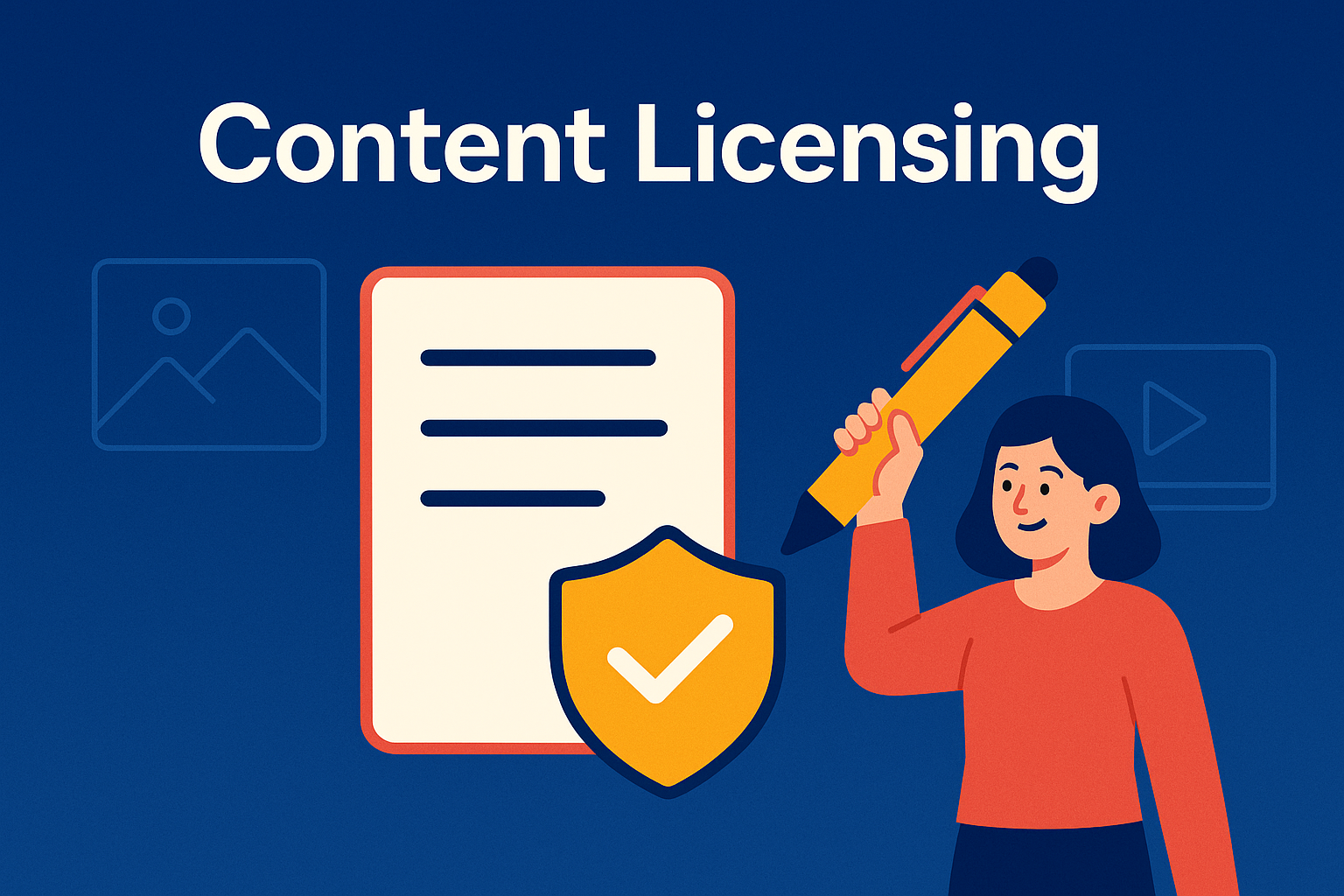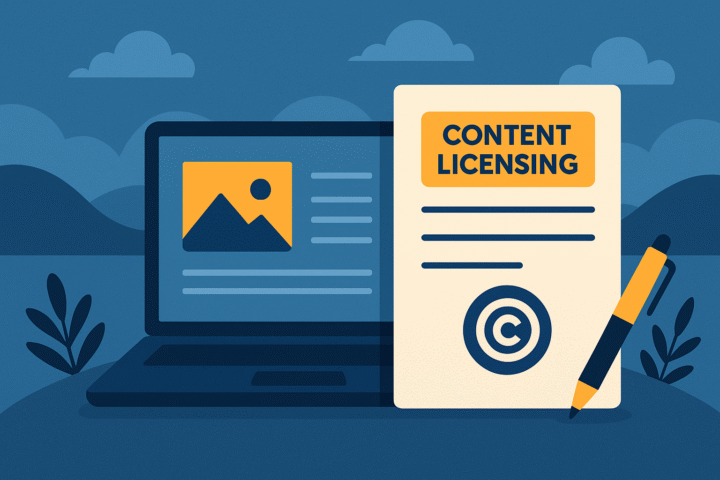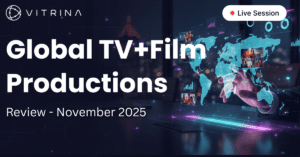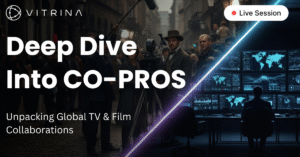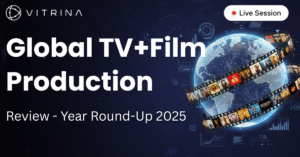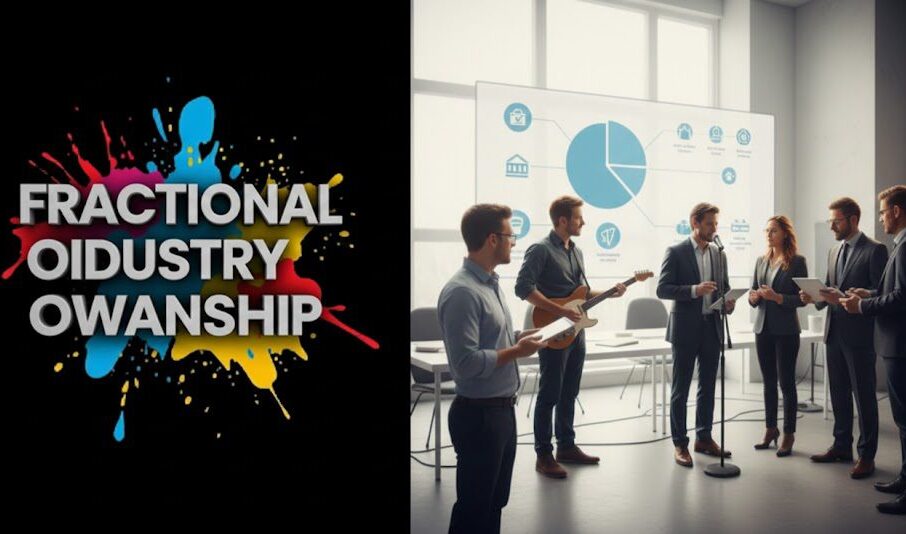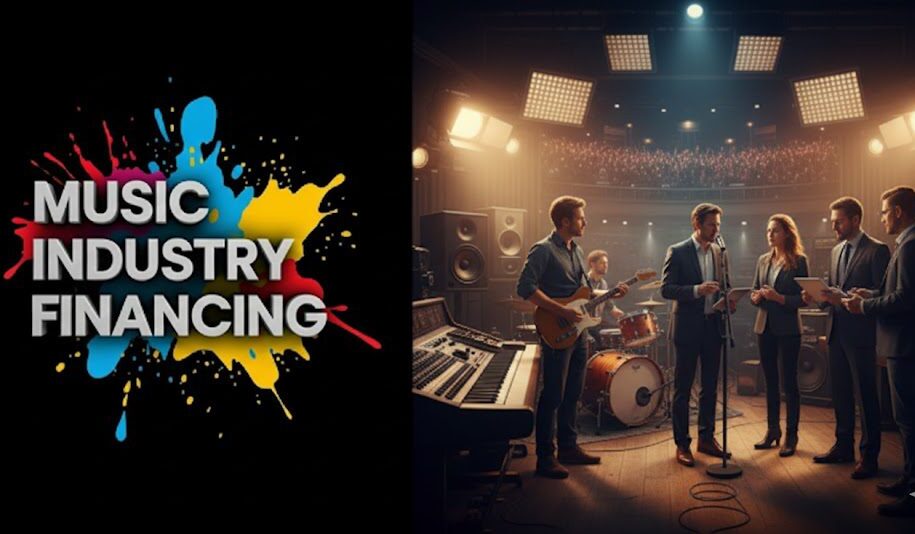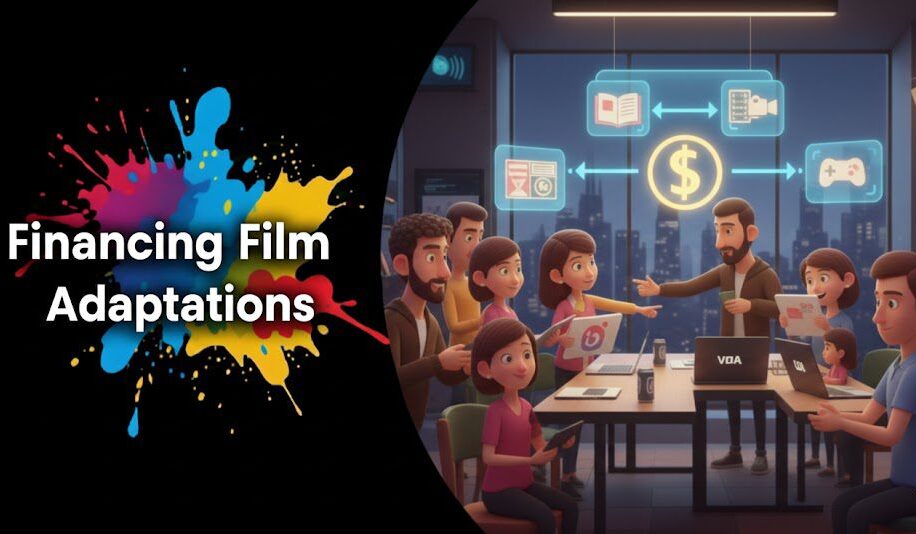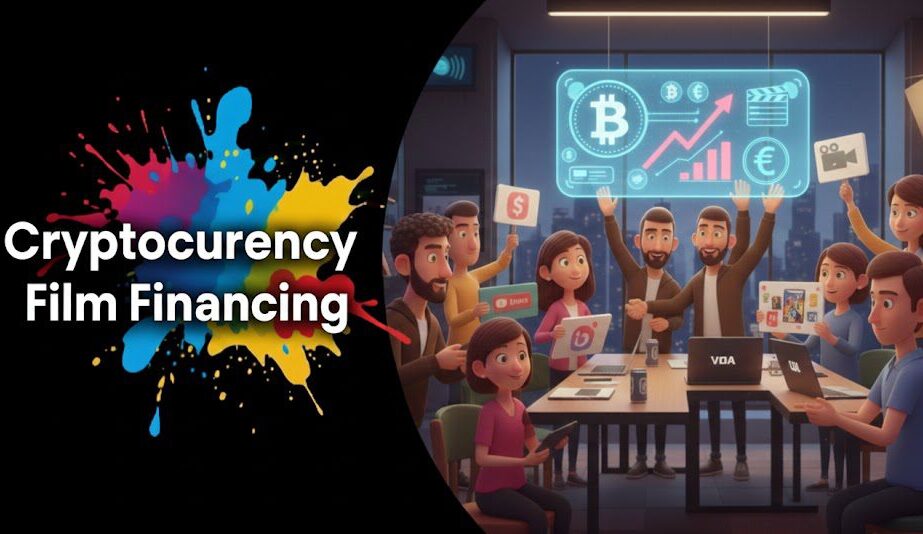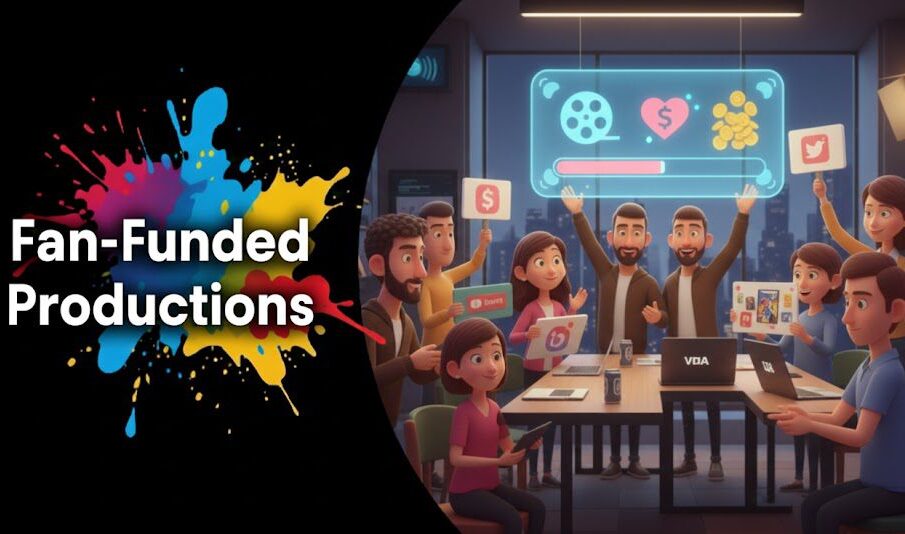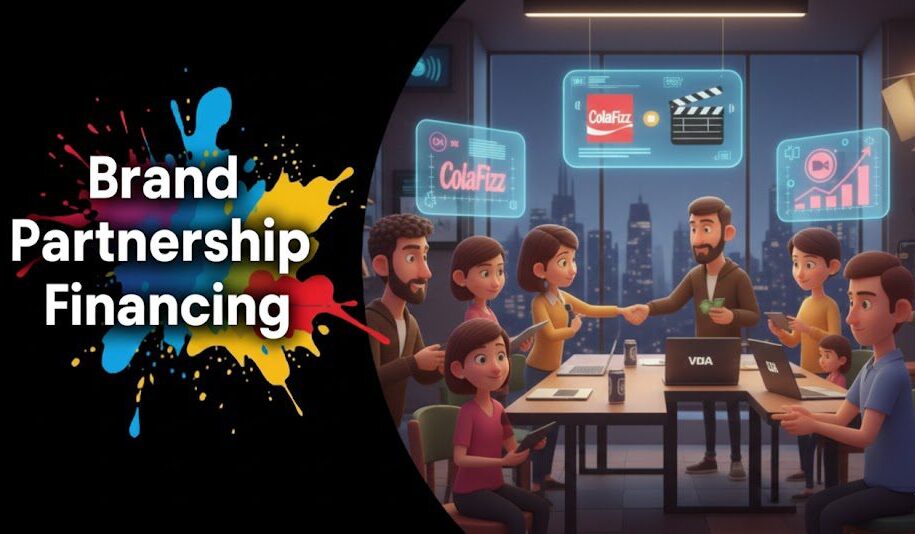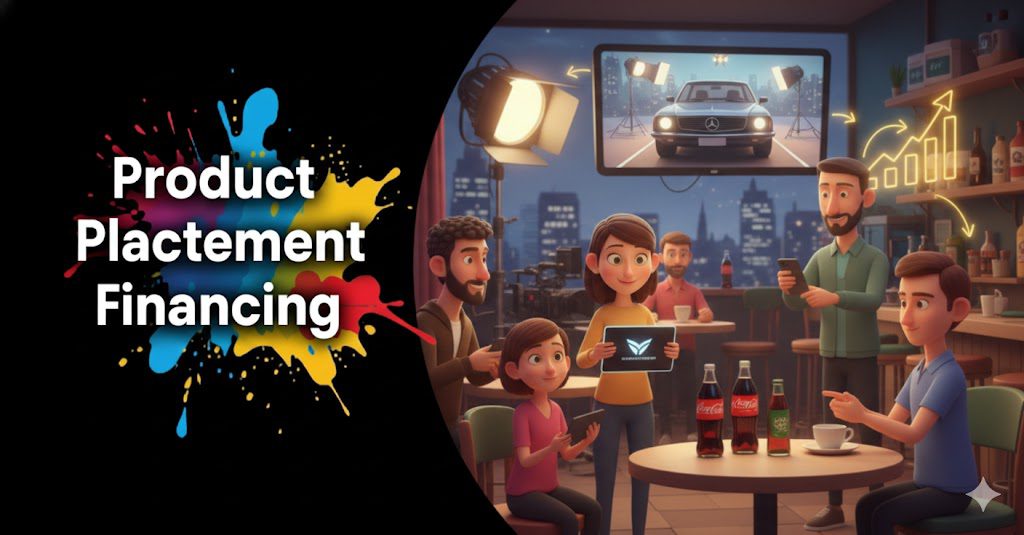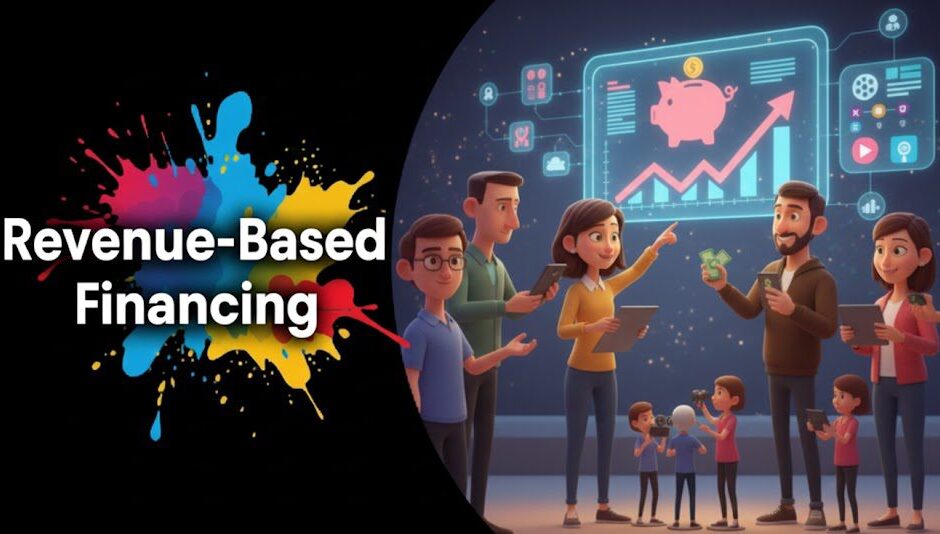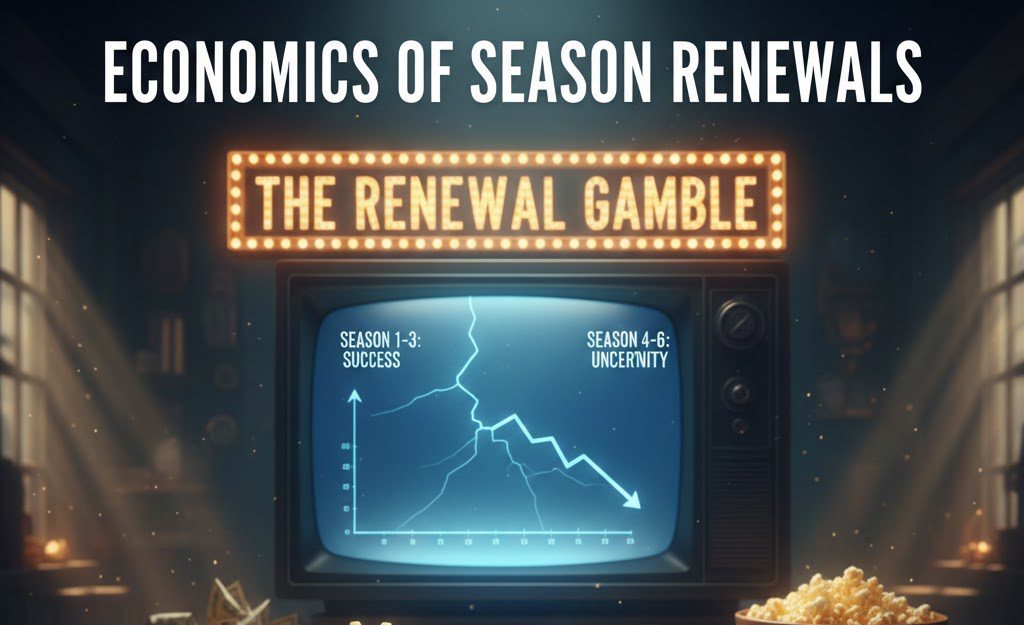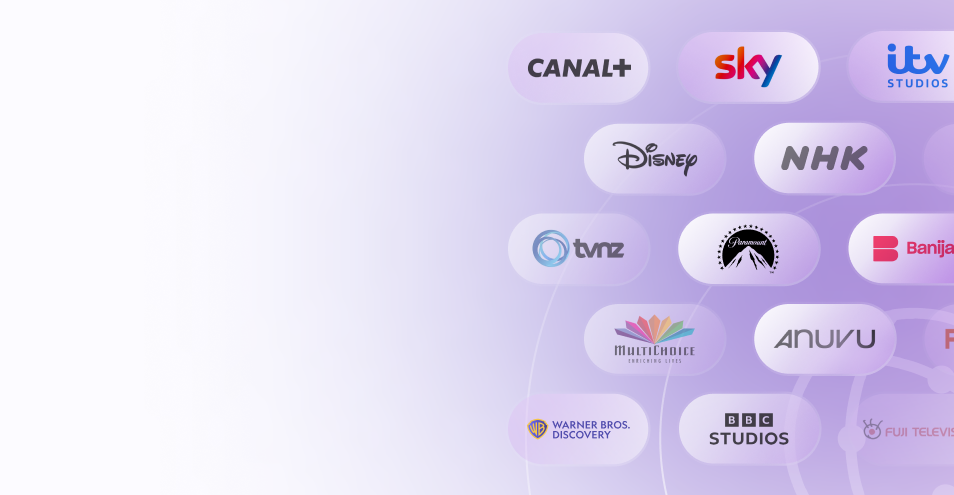Introduction
Ever wondered how your favorite movie from another country pops up on your local streaming service, or how a TV show you love gets shown in different parts of the world? The magic behind this is something called content licensing. If you’re new to the media and entertainment world, a student figuring things out, or a business thinking about using cool content, you’ve come to the right place! We’re going to break down what is content licensing in simple, everyday language. Think of it as getting permission to share someone else’s awesome creative work. This article will explain the basics, why it’s super important, and how it generally works. Let’s get started!
Table of content
- Introduction
- Key-Takeaways
- Defining Content Licensing: What Does It Really Mean?
- Why is Content Licensing a Big Deal in Media?
- Who’s Who in a Content Licensing Deal?
- How Does Content Licensing Actually Work? The Basic Steps
- Common Questions Beginners Ask About Content Licensing
- Learning More About Media Licensing
- Conclusion
- FAQs
Key Takeaways
| Concept | Simple Explanation |
|---|---|
| What is Content Licensing? | It’s like renting content: someone who owns a film or TV show (licensor) lets someone else (licensee) use it for a specific time, in specific places, for a fee. |
| Why It Matters | It helps movies and shows reach more people, allows creators to earn money, and gives platforms cool stuff to show. |
| Key Players | The Content Owner (seller) and the Content User (buyer) are the main folks involved. Sometimes, middlemen like distributors help out. |
| Basic Terms | Things like “rights,” “territory” (where it can be shown), and “term” (how long) are super important parts of the deal. |
| Real-World Example | A streaming service licensing a popular animated series to show it to its subscribers in a specific country. |
| Further Learning | For a deeper dive, check out our Definitive Guide to Content Licensing. |
New to Media Licensing and Need a Clear Start?

Defining Content Licensing: What Does It Really Mean?
So, what is content licensing exactly? Imagine you wrote an amazing song. You own that song. If someone else wants to use your song in their YouTube video, they can’t just take it – they need your permission. Content licensing is pretty much that, but often for bigger things like movies, TV shows, or even video games. The person or company that created or owns the content (they’re called the “licensor”) gives permission to another person or company (the “licensee”) to use that content. This permission isn’t usually free; the licensee pays a fee. And, the permission comes with rules, like where they can show it, for how long, and on what kind of platform (like TV, online streaming, or in theaters). It’s all about legally sharing creative work while making sure the creators get recognized and paid. This helps us understand content licensing basics.
What does it mean to “license” something?
To “license” something means to grant formal permission or a permit to do, use, or own something. In the context of media, when we talk about define content licensing, it refers to the owner of a creative work (like a film director or production company) giving legal permission to someone else to show, share, or distribute that work. The owner still keeps the ultimate ownership (the copyright), but they allow specific uses by others. It’s like a landlord renting out an apartment – the landlord still owns the building, but the tenant has the right to live there under agreed terms. This is a core part of understanding media licensing.
What kind of “content” are we talking about?
When we discuss content licensing basics, “content” can be a whole bunch of different creative things that people watch, listen to, or interact with. Some common examples include:
- Movies: From big Hollywood blockbusters to small independent films.
- TV Shows: Series with many episodes, like dramas, comedies, or reality shows.
- Cartoons & Animation: Shows and movies made for kids or adults.
- Documentaries: Films or series that tell real stories.
- Music Videos: Visuals that go along with songs.
- Video Games: Sometimes parts of games or entire games are licensed.
- Even photos or articles can be licensed!
Basically, if it’s a creative work that someone owns, it can probably be licensed.
Is licensing the same as selling?
Not quite! This is a key point in understanding media licensing. When you license content, the original owner (the licensor) still holds the copyright and ultimate ownership of that content. They are just giving someone else (the licensee) permission to use it in specific ways for a specific time. It’s like renting.
When you sell content outright (which is much rarer for things like ongoing TV shows or films with long-term value), the ownership itself (the copyright) is transferred to the buyer. Think of licensing as a temporary pass to use something, while selling is like handing over the keys for good. Most of the time in the media world, we’re talking about licensing, not selling the whole shebang. This helps clarify how content licensing works.
| Aspect | Content Licensing (Renting) | Selling Content (Ownership Transfer) |
|---|---|---|
| Ownership | Original owner keeps copyright. | Buyer gets copyright. |
| Duration | For a specific, limited time (term). | Permanent transfer (usually). |
| Control | Owner sets rules on how content is used. | New owner has full control (mostly). |
| Commonness in Media | Very common for films, TV shows. | Less common for major media assets. |
Why is Content Licensing a Big Deal in Media?
You might be wondering why content licensing is such a big deal. Well, it’s like the engine that makes the whole media world go ’round! Without it, things would be very different. Imagine if your local TV station could only show programs they made themselves, or if a streaming service in your country couldn’t show any movies or series from other parts of the world. Sounds pretty boring, right? Content licensing basics show us that this process allows great stories and creative works to travel far and wide, reaching many more people than they otherwise could. It helps creators earn a living and gives us, the audience, a much richer variety of things to watch and enjoy. It truly is fundamental to how content licensing works on a global scale.
How does it help content creators and owners?
For the folks who make movies, TV shows, or other cool stuff (the licensors), licensing is a fantastic way to:
- Make Money: This is a big one! Licensing fees provide revenue that can help them recover their production costs and make a profit. This money can then be used to create even more new content.
- Reach More People: By licensing their content to different platforms or in different countries, their work can be seen by a much larger audience than if they only showed it in one place.
- Build Their Brand: The more people see their work, the more well-known their name or their show’s brand becomes. This can lead to more opportunities in the future.
- Extend Content Lifespan: Even older content (often called “library content”) can continue to earn money through licensing deals years after it was first made.
So, content licensing is super important for the financial health and reach of creators.
How does it benefit platforms and broadcasters (the buyers)?
For the companies that show us content, like TV channels, streaming services (think Netflix or Disney+), or movie theaters (the licensees), licensing is also super important:
- Get Great Stuff to Show: They can’t possibly make every single thing they show. Licensing allows them to get a wide variety of movies, series, and other programs to keep their viewers interested.
- Attract and Keep Audiences: Having popular or exclusive licensed content is a key way to get people to tune in or subscribe, and to keep them coming back for more.
- Fill Their Schedules: TV channels need a lot of content to fill their airtime, and streaming services need big libraries. Licensing helps them do this.
- Compete with Others: In a crowded market, having unique or highly sought-after licensed content can give them an edge over their competitors.
This highlights how content licensing works to build diverse media offerings.
What’s the impact on us, the audience?
For us, the viewers, content licensing means we get:
- More Choices: We get to watch shows and movies from all over the world, not just those made locally. Think about enjoying a K-drama, a British detective series, or a Hollywood blockbuster, all thanks to licensing.
- Access on Different Platforms: We can watch content on TV, on streaming services, in theaters, or even on airplanes because these platforms have licensed it.
- Content in Our Language: Licensing often includes dubbing (changing the voices to our language) or subtitling, making foreign content accessible.
- A Richer Cultural Experience: We get exposed to different stories, cultures, and perspectives from around the globe.
So, the next time you’re binge-watching a show from another country, remember that content licensing made it possible! It’s a core part of understanding media licensing from a viewer’s point of view.
| Stakeholder | Primary Benefit of Content Licensing | Example |
|---|---|---|
| Content Creators/Owners | Monetization and wider reach for their work. | A film studio earning fees by licensing its movie to international TV channels. |
| Platforms/Broadcasters | Acquiring diverse content to attract and retain audiences. | A streaming service licensing a popular TV series to boost subscriptions. |
| Audience | Access to a greater variety of global content. | Watching an animated show from Japan dubbed into English. |
Who’s Who in a Content Licensing Deal?
Okay, so we know what is content licensing and why it’s important. But who are the actual people or companies making these deals happen? It’s not usually just two people shaking hands (though that’s part of it!). There are a few key roles you’ll hear about. Understanding these roles helps to further define content licensing and its practical application. It’s like knowing the players on a sports team – each has a specific job to do to make the game (or in this case, the deal) successful. Let’s meet the main players on the content licensing field.
Who is the “Licensor”?
The Licensor is the owner of the content. They hold the rights (like the copyright) to the movie, TV show, or whatever creative work it is. Think of them as the “seller” in the deal. Their job is to grant permission – or a “license” – to someone else to use their content.
- This could be a big movie studio like Warner Bros. or Disney.
- It could be an independent film production company.
- It might even be an individual filmmaker who created their own movie.
- Sometimes, it’s a distribution company that has already acquired the rights from the original creator to then license them out to others.
The licensor wants to get their content seen and make money from it.
Who is the “Licensee”?
The Licensee is the person or company who wants to use the content. They are the “buyer” in the deal. They get the permission (the license) from the licensor to show, distribute, or broadcast the content according to the agreed terms.
- This could be a TV network like BBC or NBC.
- It could be a streaming service like Netflix, Amazon Prime Video, or a local streaming platform.
- It might be a movie theater chain.
- It could even be an airline wanting to show movies on their flights (in-flight entertainment).
The licensee wants to get cool content to attract their audience. This is central to how content licensing works.
Are there other important roles like distributors or agents?
Yes, definitely! It’s not always a direct deal between the original creator and the platform showing the content. Often, there are middlemen who help make these deals happen:
- Distributors: These companies specialize in taking content from producers and getting it out to various platforms and territories. They might acquire a bundle of rights from a producer and then license those rights out to different licensees (TV channels, streaming services, etc.). They have the network and expertise to reach many buyers.
- Sales Agents: Similar to distributors, sales agents represent content creators (licensors) to find buyers (licensees) for their content. They usually work on commission, meaning they get a percentage of the licensing deals they close. They are experts in navigating content markets and negotiating deals.
These intermediaries are very important, especially for getting content into international markets. They help simplify the content licensing basics for creators who might not have global connections.
| Role | Also Known As | Main Job |
|---|---|---|
| Licensor | Content Owner, Seller, Rights Holder | Grants permission to use content. |
| Licensee | Content User, Buyer, Acquirer | Gets permission to use content. |
| Distributor/Sales Agent | Middleman, Content Broker | Connects licensors with licensees, facilitates deals. |
Want to Understand the Foundation of Media Distribution?

How Does Content Licensing Actually Work? The Basic Steps
Now that we know what is content licensing and who the players are, let’s look at the basic journey of how a piece of content actually gets licensed. It’s a process with several steps, a bit like planning a trip. You need to decide where you want to go (find the content or the buyer), agree on the price and rules (negotiate the deal), sign the papers (the agreement), and then pack your bags (deliver the content). While every deal is unique, there’s a general flow that most follow. Understanding these steps will give you a clearer picture of how content licensing works in practice.
Step 1: Finding Each Other (Discovery)
This is where the buyer (licensee) looks for content, and the seller (licensor) tries to get their content noticed.
- Buyers might look for content that fits their channel or platform, something their audience would love, or something that fills a gap in their schedule. They might go to big industry events called content markets, browse online catalogs, or talk to distributors.
- Sellers will prepare information about their content (like trailers, summaries) and try to show it to as many potential buyers as possible, either directly or through a sales agent.
This stage is all about making connections. Platforms like Vitrina can make this discovery process much easier by connecting buyers and sellers directly.
Step 2: Talking and Agreeing (Negotiation & Agreement)
Once a buyer is interested in a piece of content, the talking begins! This is negotiation. They discuss:
- What rights are being licensed: Can it be shown on TV, online, or both?
- Where can it be shown (Territory): In just one country, or several?
- For how long (Term): A few months, a year, or longer?
- How much will it cost (License Fee): Will it be a one-time payment, or will the seller get a share of the money the content makes?
- Exclusivity: Will this buyer be the ONLY one to show it in that area during that time?
When they agree on these key points, lawyers usually get involved to write up a formal contract called a “licensing agreement.” This document is super important as it lays out all the rules. This is a critical part of content licensing basics.
Step 3: The Handover (Delivery and Use)
After the agreement is signed and often once some payment is made, the seller delivers the content to the buyer.
- This usually means sending high-quality video and audio files, and sometimes other things like artwork for promotion or scripts for subtitles.
- The buyer then prepares the content for their platform – maybe they need to add subtitles, dub it into another language, or edit it to fit their time slots.
- Then, finally, they get to show it to their audience according to the rules in the agreement!
The licensor might also need to check in to see how the content is doing or if the licensee is following all the rules. This is all part of understanding media licensing.
| Basic Step | What Happens for Seller (Licensor) | What Happens for Buyer (Licensee) |
|---|---|---|
| Discovery | Markets content, seeks buyers. | Sources content, evaluates options. |
| Negotiation & Agreement | Discusses terms, aims for best value. Signs contract. | Discusses terms, aims for best fit. Signs contract. |
| Delivery & Use | Delivers content files. May monitor usage. | Receives files, prepares for platform, exhibits content. |
Common Questions Beginners Ask About Content Licensing
When you’re just starting to learn about what is content licensing, a lot of questions can pop up. It’s a big topic with many parts! Here, we’ll try to answer a few of the common questions that beginners often ask. Getting these basics clear will help you build a solid foundation for understanding media licensing and how this important part of the entertainment industry functions. Remember, there are no silly questions when you’re learning something new!
Can I license just a small clip of a movie or show?
Yes, often you can! This is usually called “clip licensing.” If you only need a short segment of a film or TV show – perhaps for a documentary you’re making, an educational presentation, or even a commercial – you typically don’t need to license the entire work. You would negotiate with the rights holder specifically for the rights to use that particular clip. The terms (like how long you can use it, where, and the fee) would be specific to that clip. This is a more specialized area but an important part of how content licensing works for certain uses.
What happens if someone uses content without a license?
Using content without a license or proper permission from the rights holder is generally a form of copyright infringement. This can lead to serious legal trouble! The copyright owner (the licensor) can take legal action against the person or company using their content without permission. This could result in:
- Being forced to stop using the content immediately (an injunction).
- Having to pay damages (money) to the copyright owner for the unauthorized use and any harm caused.
- In some cases, especially for large-scale commercial infringement, there could even be criminal penalties, though this is rarer for simple mistakes by individuals.
It’s always best to make sure you have the correct licenses in place before using someone else’s creative work. This is fundamental to content licensing basics – always get permission!
How does licensing work for online content like YouTube videos?
Licensing for online content, especially on platforms like YouTube, has its own set of rules, but the basic principles of content licensing still apply.
- Using Music: If you want to use copyrighted music in your YouTube video, you generally need a “synchronization license” from the music publisher (who owns the song composition) and a “master license” from the record label (who owns the specific recording of the song). YouTube has systems like Content ID that can detect copyrighted music, and videos might be taken down, monetized by the rights holder, or muted if licenses aren’t in place. Some platforms offer libraries of royalty-free or licensed music for creators.
- Using Video Clips: If you use clips from movies or TV shows, you’d technically need permission (a license) from the rights holder, unless your use falls under “fair use” or “fair dealing” (which are complex legal doctrines that vary by country and apply in very specific, limited circumstances, like for criticism, commentary, or parody).
Many platforms are working on making it easier for creators to license content legally, but it’s always the creator’s responsibility to ensure they have the rights.
| Beginner Question | Short Answer | Key Takeaway |
|---|---|---|
| Can I license just a clip? | Yes, it’s called clip licensing. | Negotiate specifically for the rights to use short segments. |
| What if I use content without a license? | It’s copyright infringement and can lead to legal issues. | Always secure permission before using copyrighted material. |
| How does it work for YouTube content? | You still need licenses for music/video clips, unless it’s fair use (which is limited). | Understand platform rules (e.g., Content ID) and creator responsibilities. |
Learning More About Media Licensing
Hopefully, this article has given you a good, plain English introduction to what is content licensing. We’ve covered the basic definition, why it’s so important for everyone from creators to viewers, who the main players are, and the general steps involved in a licensing deal. We also touched on a few common questions beginners have. This is just the starting point, though! The world of media and content licensing is vast and fascinating, with many more layers to explore. If you’re keen to dive deeper and understand the more intricate details, there are plenty of resources available.
For those looking to get a comprehensive understanding of all facets of this field, including the detailed processes, legal agreements, rights management strategies, financial models, and future trends, we highly recommend checking out our in-depth pillar page: Content Licensing: The Definitive Guide for Buyers, Sellers & Industry Professionals in 2024. This guide serves as a central hub for all things related to content licensing and will point you to even more specialized information. Whether you’re aiming to build a career in media, launch your own content, or simply become a more informed media consumer, understanding how content licensing works is a valuable skill.
Conclusion
So, what is content licensing? At its heart, it’s the crucial handshake that allows creative works to travel, to be shared, and to be enjoyed by audiences far beyond their point of origin. It’s a system built on permissions and agreements, ensuring that creators are compensated and that platforms have a rich variety of content to offer. From understanding that it’s more like “renting” than “buying” content, to recognizing the key players like licensors and licensees, and getting a feel for the basic steps of a deal, we hope this plain English explanation has demystified the content licensing basics for you. It’s a fundamental pillar of the modern media and entertainment industry.
As you’ve seen, how content licensing works impacts everyone – from the filmmakers and TV producers to the streaming services and broadcasters, and ultimately, to us, the audience. It’s what fills our screens with diverse stories from around the globe. If this introduction has sparked your interest, remember there’s always more to learn, starting with our comprehensive Definitive Guide to Content Licensing.
Want to explore the world of content licensing further or find your next great piece of content? Discover how platforms like Vitrina are making content discovery and licensing easier than ever!
Frequently Asked Questions
The simplest way to define content licensing is: it’s getting official permission (a license) from the owner of a creative work (like a movie or TV show) to use that work in specific ways, for a specific time, and usually in specific places, often in exchange for a fee.
Anyone involved in creating, distributing, or exhibiting media content should understand content licensing basics. This includes filmmakers, TV producers, musicians, game developers, broadcasters, streaming platform managers, marketing professionals using media, and even students of media studies.
No, not at all! While big companies are heavily involved in large-scale content licensing, independent creators, small businesses, and even individuals might need to license content (e.g., music for a promotional video) or license out their own work. The principles apply across the board, though the scale and complexity of deals may vary.
Some text


